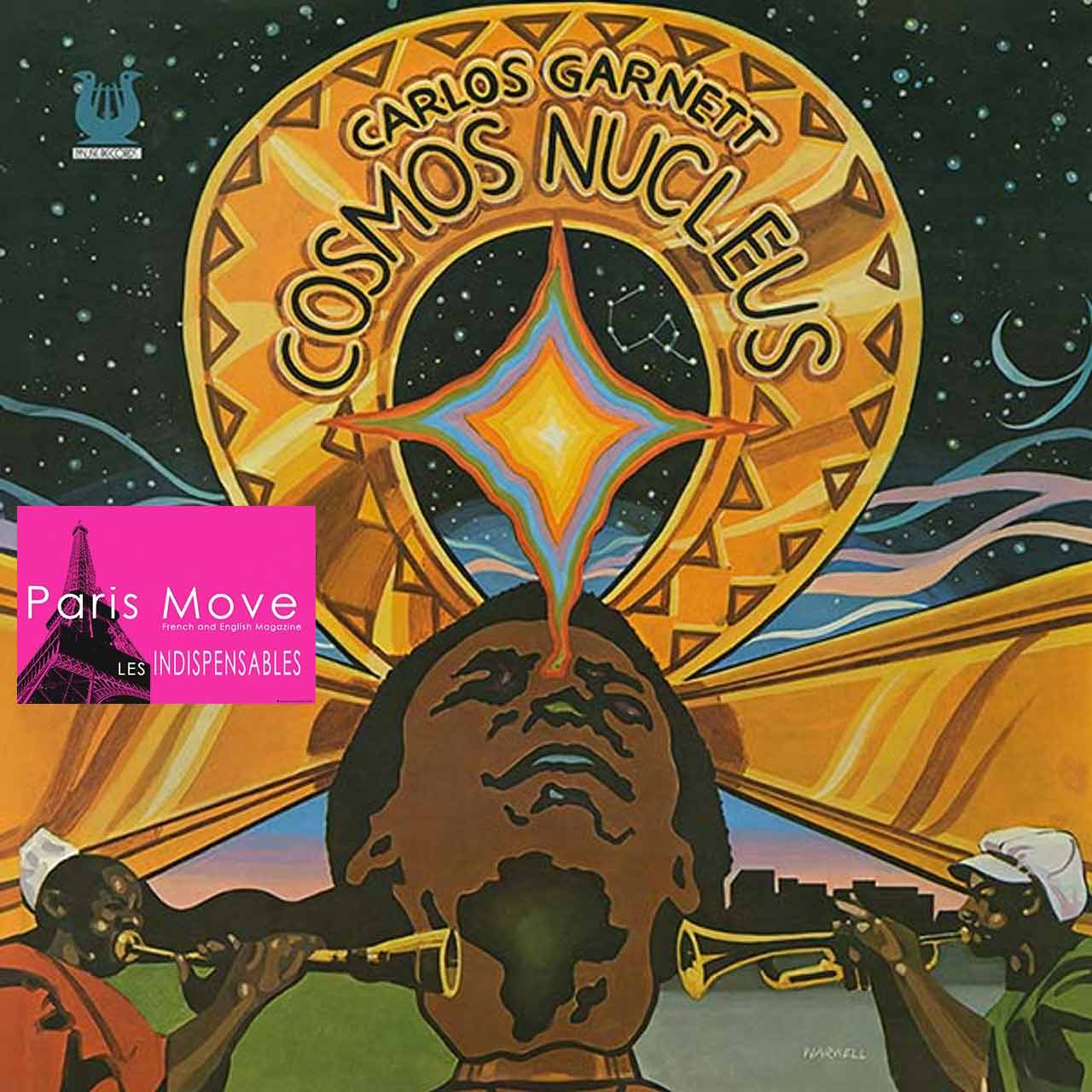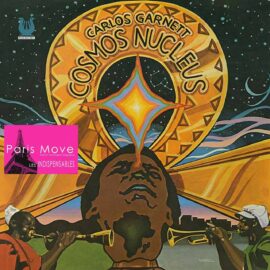| Jazz caraïbéen |

Carlos Garnett’s Cosmos Nucleus: The Sound of a Visionary Who Bridged Worlds
When Cosmos Nucleus appeared on the Muse label in 1976, the musical landscape was saturated with the warmth of Latin melodies and the pulse of fusion. Carlos Santana’s Europa was spinning endlessly across European radio stations, so omnipresent it became both anthem and overdose. Yet, in the shadow of that commercial tide, a quieter revolution was taking place. From the Panama-born saxophonist Carlos Garnett came an album that sounded less like a product of its time and more like a manifesto for the future of jazz.
Garnett’s music was never about seducing the charts. His was a sound built on architectural precision, infused with the rhythms of the Caribbean and the harmonic daring of post-Coltrane modernism. Cosmos Nucleus emerged as a carefully constructed statement, a meeting point between jazz, funk, and psychedelic exploration, the kind of music that felt equally at home in a smoky Harlem club or a San Francisco loft filled with incense and synthesizers. One could imagine the collective MFSB nodding in approval: here was groove meeting consciousness, structure meeting freedom.
The Caribbean influence has long been a lifeblood of jazz, from Dizzy Gillespie’s Afro-Cuban experiments to the tropical cadences of Sonny Rollins’ St. Thomas. But Garnett inverted the equation. His jazz wasn’t touched by the Caribbean; it sprang from it. There’s an island pulse that anchors his cosmic improvisations, a spiritual connection between the drum and the divine. Psychedelia, too, was part of the formula, not as a gimmick but as a reflection of a time when musicians believed sound could expand the mind.
Garnett arrived in New York in 1962, a young man from Panama carrying a saxophone and dreams as vast as the skyline. Within a few short years, he was playing alongside some of the most revered figures in jazz: Freddie Hubbard, Art Blakey, and Miles Davis, whose own explorations into the electric frontier seemed to mirror Garnett’s instincts. Between 1974 and 1977, he released five albums, each a step deeper into a personal odyssey that balanced spirituality with sonic adventure.
But genius often comes at a cost. The same decade that gave birth to fusion also drowned many of its prophets in excess. Garnett, battling depression and addiction, fell silent for nearly ten years. His disappearance became a quiet wound in the story of jazz. When he reemerged in the 1990s with Fuego en mi alma (1996), Under Nubian Skies (1999), and Moon Shadow (2001), it was as though he had returned from another planet, older, wiser, yet still glowing with that unmistakable cosmic fire. By 2000, he had gone home to Panama, closing a circle that began almost forty years before.
In 2012, during the Panama Jazz Festival, pianist Danilo Pérez, himself a product of Garnett’s cultural lineage, paid tribute to his elder. It was more than homage; it was a generational handshake across time, a recognition that Garnett’s music had made it possible for younger Panamanian artists to find a global stage. His presence loomed not just in memory but in the language of modern jazz itself.
Listening to Cosmos Nucleus today feels like peering into the blueprint of a sound still unfolding. Garnett’s approach to the saxophone, fluid yet forceful, expressive yet restrained — helped shape the instrument’s evolution in the decades that followed. His tone, simultaneously spiritual and urban, inspired not only musicians but also sound engineers, who chased the resonance of his recordings much as they once did with Miles Davis’ trumpet.
There’s a strand of free jazz woven through Garnett’s playing, a willingness to let structure collapse in the name of expression. At times, it recalls the elasticity of Sonny Rollins, though Garnett’s compass pointed more toward the stars than the streets. In the fertile chaos of the 1970s, when every player seemed to be borrowing, learning, and reimagining from everyone else, Garnett stood out as a true original, a visionary who fused the intellectual rigor of jazz with the mysticism of the cosmos.
To revisit his work now is to rediscover a crucial bridge in the history of improvisation, between the soul-searching of the 1960s and the digital experimentation of today. For younger musicians, Cosmos Nucleus remains a kind of textbook: a reminder that innovation in jazz has always depended on courage, and that freedom in music requires discipline, memory, and faith.
Carlos Garnett may never have enjoyed the commercial fame of his contemporaries, but his contribution is foundational. Albums like Cosmos Nucleus are sonic documents of evolution, blueprints for the art of boundary-crossing. To listen is to hear not just one man’s voice but an entire movement, the sound of the Caribbean meeting the cosmos, the local reaching for the infinite.
Thierry De Clemensat
Member at Jazz Journalists Association
USA correspondent for Paris-Move and ABS magazine
Editor in chief – Bayou Blue Radio, Bayou Blue News
PARIS-MOVE, October 8th 2025
Follow PARIS-MOVE on X
::::::::::::::::::::::::
Musicians:
| Carlos Garnett | tenor saxophone, soprano saxophone, ukelele, vocals |
| Otis “Junior” McCleary | guitar |
| Kenny Kirkland | electric piano |
| Cecil McBee, Jr. | electric bass |
| Byron Benbow | drums |
| Neil Clarke | congas, percussion |
| Gene Ballard | bongos, percussion |
| Cheryl P. Alexander | vocals |
| Cyril Greene | trumpet |
| Angel Fernandez | trumpet |
| Preston Holas | trumpet |
| Wayne Cobham | trumpet |
| Roy Campbell, Jr. | trumpet |
| Quentin Lowther | trumpet |
| Abdul Malik | trumpet |
| Charles Doughterty | alto saxophone |
| Al Brown | alto saxophone |
| Robert Wright | alto saxophone |
| Randy Gilmore | tenor saxophone |
| Zane Massey | tenor saxophone |
| Akum Ra Amen-Ra | tenor saxophone |
| Yah Ya | tenor saxophone |
| Carlos Chambers | baritone saxophone, ukelele |
| Cliff Anderson | trombone |
| Andrew Washington | trombone |
| James Stowe | trombone |
Track Listing:
Side A:
- Saxy
- Cosmos Nucleus
- Wise Old Men
Side B:
- Mystery of Ages
- Kafira
- Bed-Stuy Blues

